 |
 |
 |
 |
| |
||||
Heart ViewA CBS 2 News Special Assignment 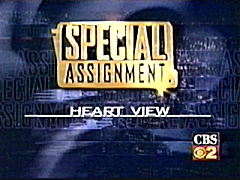 Heart disease is the No. 1 killer of Americans. Heart disease is the No. 1 killer of Americans. But what if you could find out you're at risk for heart disease years before any symptoms show up? CBS 2 News' Thelma Gutierrez shows how you can now see what's invading your heart, and stop it before you have a heart attack. Special Assignment: Heart View aired Wednesday, January 6, 1999 at 11 p.m. "My father had a heart attack at 52," Rubin told CBS 2 News' Thelma Gutierrez. "My mother has angina." And Rubin has high cholesterol, reported Gutierrez. "There's always that fear in the back of my mind. It runs in my family," Rubin said. It runs in Mick DeRobertis' family as well. For him, that means disaster could be just a few years away. Just a year ago, you'd need a tread mill stress test or an EKG to tell you if you had heart disease, said Gutierrez. The problem? By the time it shows up on those tests, the disease is advanced and your arteries are significantly clogged. Dr. Daniel Berman, of Cedar's Sinai Medical Center, told CBS 2 News that's not the case anymore. "This is essentially saving their lives," Dr. Berman said. At the Heart Watch Center at Cedar's, Rubin had an electron beam CAT scan of her heart. It's a 10 minute test that will measure the amount of calcium in her arteries. It's the earliest indicator of coronary artery disease. The test is painless, said Gutierrez. Rubin doesn't even need to remove her clothes. Once the CAT scan is done, it's time to see her heart. "It's a little scary at first. When it gets interpreted, you have to be ready to accept the knowledge," Rubin said. "This is the calcium in your coronary arteries," Dr. Berman pointed out to Rubin. "You can also see it in your second vessel." Rubin learned she had plaque in two of three of her arteries. Next it's DeRobertis' turn, said Gutierrez. Plaque is also found in his coronary arteries, perhaps years before he shows any symptoms such as a heart attack. "Reality was there set in stone," DeRobertis said after learning the results. "It was a reality check." Dr. Berman said just seeing the results and looking at the disease in their hearts is a powerful tool. He said it motivates patients to make lifestyle changes, as DeRobertis plans to do. "I will go on cholesterol-lowering medicine," DeRobertis told Gutierrez. "If I don't get it, I'll ask for it." Dr. Berman said with this technology and information, Rubin and DeRobertis can add years to their lives by stopping the disease before it stops them. He said the new CAT scan may one day make the treadmill stress test obsolete. The test costs $400, and it includes a cholesterol screening and a complete blood workup.
|
||||||||||

|
||||||||||
|
Retire Rich
 |

 |
||
|
12 p.m.
Woman 2 Woman One of the stars from "Judging Amy" 5 p.m. 6 p.m. 11 p.m.
|
||
 |
||
|
4-5 p.m.
Judge Judy Ruler Of The Free World! 8:00 p.m. 8:30 p.m.
9:00 p.m.
|
||
| |
||
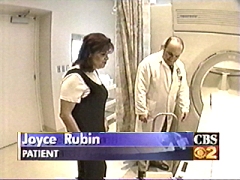 Joyce Rubin is 51 years old. She recently experienced a turning point in her life, when she found out if she faces the same fate as her parents.
Joyce Rubin is 51 years old. She recently experienced a turning point in her life, when she found out if she faces the same fate as her parents. 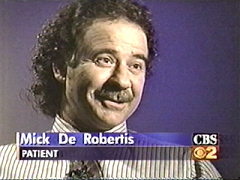 "All the males on my father's side exhibited some form of heart disease by 50," DeRobertis told Gutierrez. "I had a way of looking at a snapshot in time into the future. Being 46, I had an opportunity to pre-empt problems that may come about."
"All the males on my father's side exhibited some form of heart disease by 50," DeRobertis told Gutierrez. "I had a way of looking at a snapshot in time into the future. Being 46, I had an opportunity to pre-empt problems that may come about." 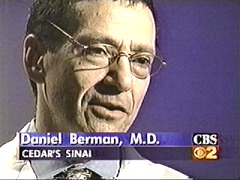 "I may tell you something you don't like, but I'm telling you something completely treatable. Once we define it, we can completely stop it," Dr. Berman told Rubin.
"I may tell you something you don't like, but I'm telling you something completely treatable. Once we define it, we can completely stop it," Dr. Berman told Rubin. 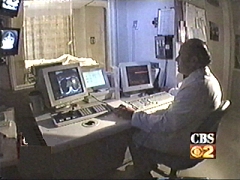 "So there's good news and bad news," Dr. Berman said. "The good news is that it was caught early on. The bad news is you have a disease at a young age you'd like not to have."
"So there's good news and bad news," Dr. Berman said. "The good news is that it was caught early on. The bad news is you have a disease at a young age you'd like not to have." 

